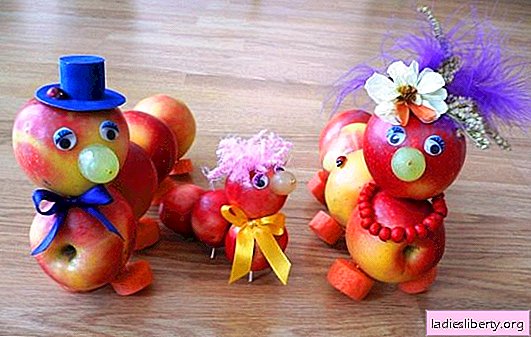
Florists who manage to acquire planting bulbs of this type of gladiolus will be amazed by the beauty and sophistication of blooming flowers. Consider the features and principles of proper care for this amazing plant.
An unusual variety of gladiolus that brings genuine pleasure to connoisseurs of true beauty! Its peculiar name speaks for itself. The green leaves and stem of the plant make it look like an iris. But the flower itself is more like a tiny gladiolus. Therefore, in the circle of gardeners, he is called Japanese gladiolus.
It blooms for a very long time - from mid-summer to early autumn. The palette of colors is impressive: from snow-white to dark red. This plant will be a great decoration for an autumn flower garden. The flowers themselves resemble stars gathered in a spikelet. They can be planted both separately and together with other species. Such gladioli look very elegant against the background of a green lawn. They are also often used to decorate ponds.
From Japanese gladioli you can make a stunning bouquet that will retain its original appearance for a long time.
Selection
You can propagate the flower in the same way as regular gladiolus: bulbs, "children" and seeds. The planting time for each material is different. For example, seeds are sown at the end of winter. Then the small seedlings dive. This plant blooms only after 1.5 - 2 years.
It is even better to plant the sprouts in a pot in March, and then transfer the prepared seedlings with a lump of earth to a flower bed.
But the bulbs are planted at the end of spring in high-calorie soil to a depth of 7 - 8 cm, with a distance of 10 - 20 cm from each other. Usually one large bulb produces about 10 flowers. Before planting, it must be kept warm or soaked in a strong solution of potassium permanganate.
Care
This plant loves sunlight. In the shade, the flower simply will not blossom. Even for Japanese gladiolus, humus, plenty of moisture and mineral fertilizers are needed. Caring for it is no different from the principles of growing ordinary varieties. Throughout the summer, the plant must be fed, systematically watered and rid of weeds. Unlike simple gladioli, this species, after cutting, can stand in water for a very long time. This is the only flower that practically does not get sick.
Harvesting begins before the onset of cold weather. A plant with a lump of soil is brought into a cool basement and stored at 3-6 degrees until next spring. Left in the cold ground, the bulbs may die after the onset of frost. Small bulbs planted in a container, and in the spring, transferred to the ground, will please the first flowers in the same year.
Seed collection and storage
In order not to meet the summer season with empty beds, it is necessary to prepare planting material in advance. The seed-filled containers collected in the summer should be put in a strong rag bag and beat with a stick. Then, like a seed cleaning machine, sift the seeds through a sieve. You can also fill them in a plate with water. All garbage will rise up, and heavy seeds will sink to the bottom. After that, they must be dried, sorted and put into bags, each signed.
Some experienced flower growers leave few seeds for germination testing. If after a month they don’t hatch, they can be safely thrown out. The remaining material must be stored in a dry place until spring. Compliance with all principles of the proper collection and storage of flower seeds will provide a lush flowering crop for next year.











